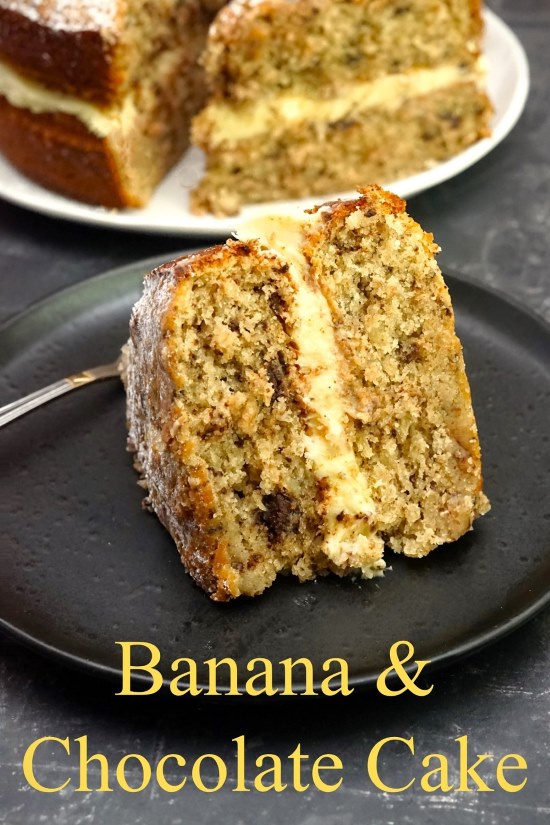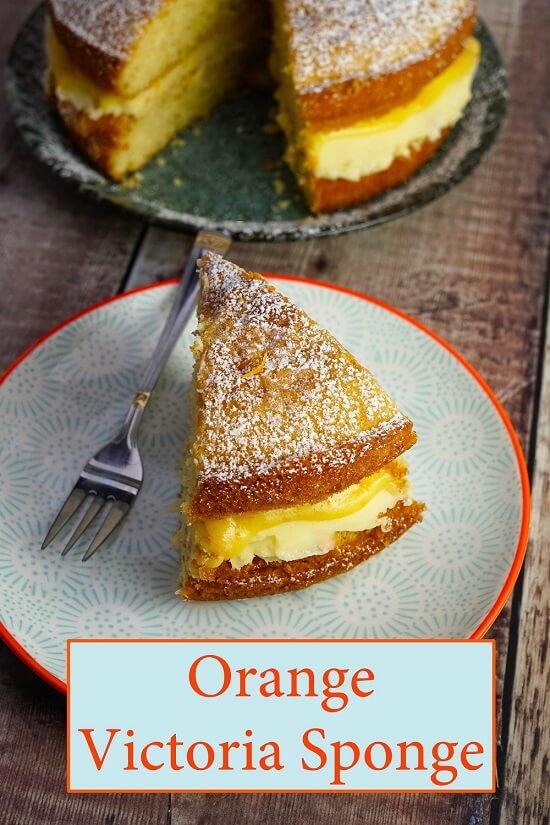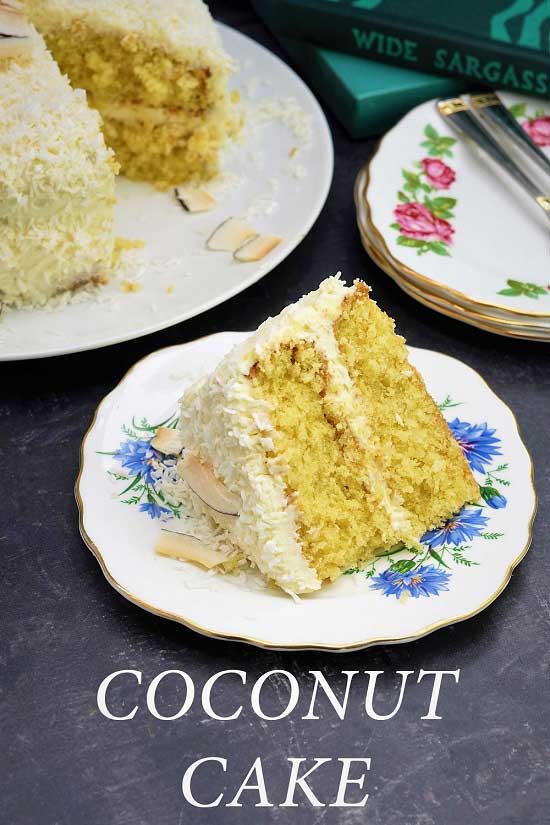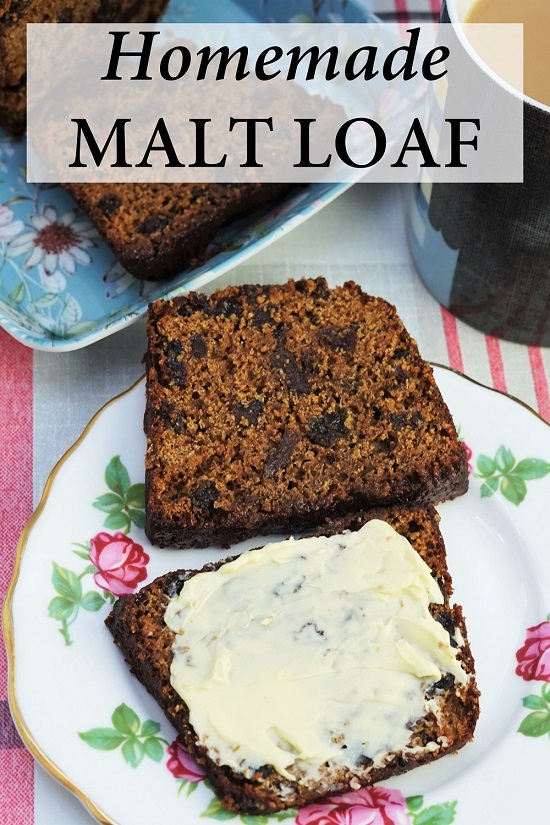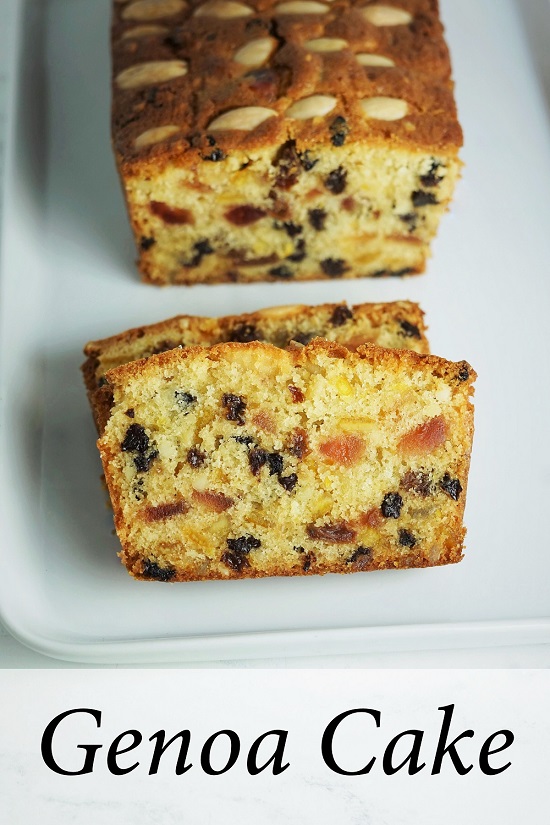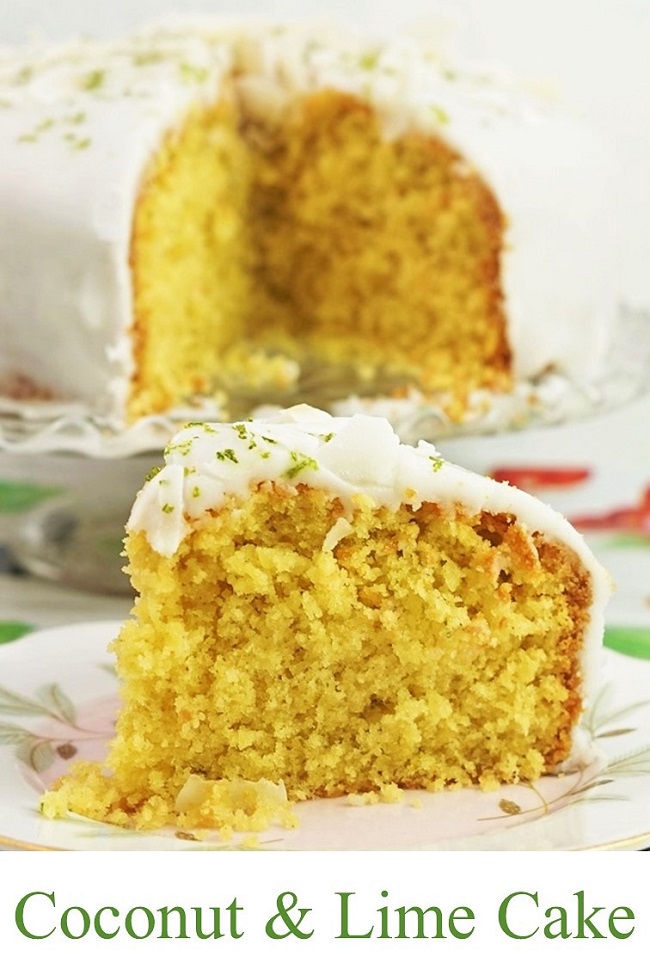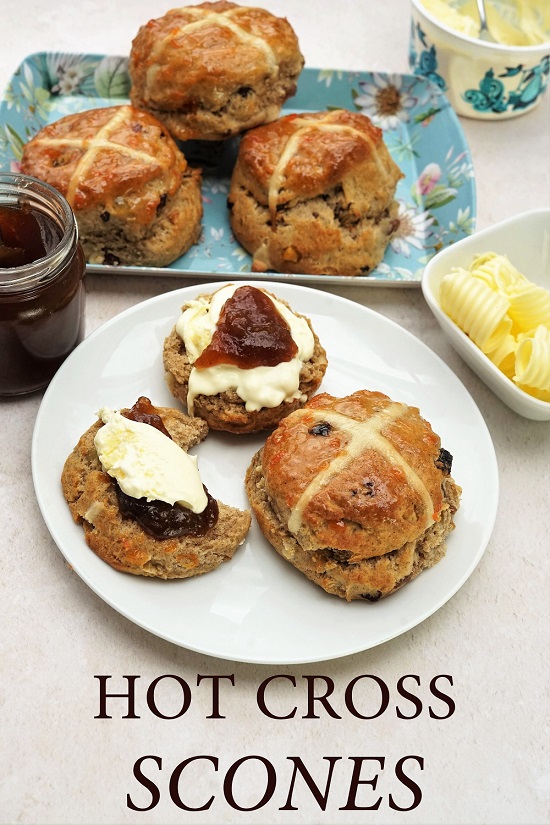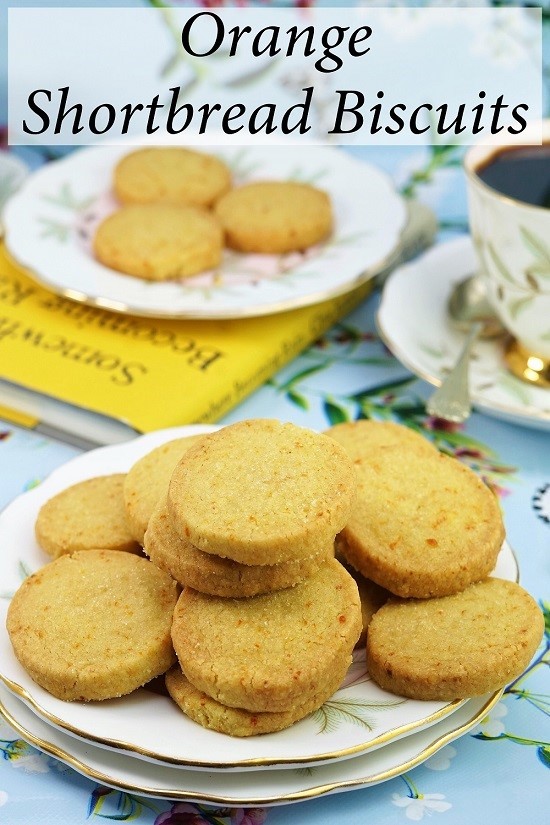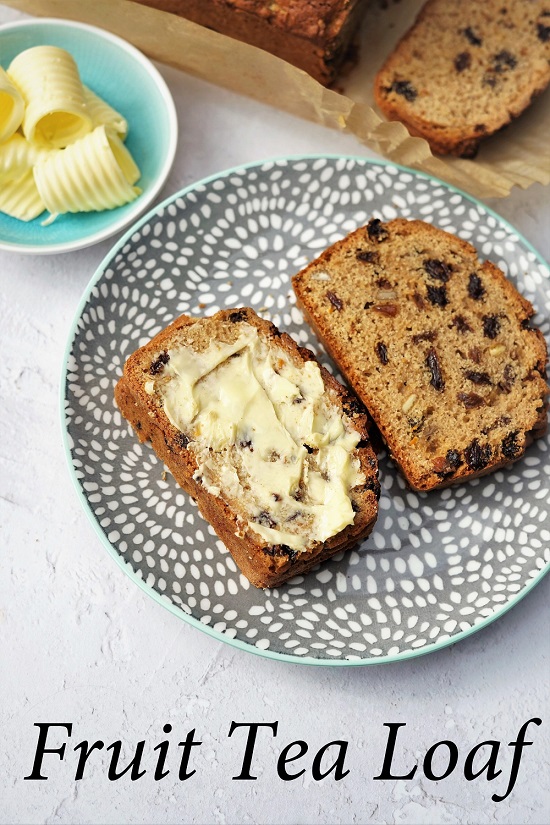Victoria Sponge Cake with Jam & Vanilla Buttercream
Victoria Sponge Cake is a British classic. And with good reason, I think. Because there’s something so satisfying about its combination of simple flavours. Buttery sponge cakes sandwiched with fruity jam and, in my version, plenty of buttercream with a hint of vanilla.

A good Victoria Sponge is also quick and easy to make, even for beginners. Perfect as a snack with a cuppa, as part of a traditional afternoon tea, as a dessert, or for picnics, no wonder Victoria Sponge always comes near the top in surveys of Britain’s favourite cakes.

Jump to Recipe
I thought it would be easy enough, as a preamble to my Victoria Sponge recipe, to say a little about when this popular cake was first made. But I was wrong as its exact origins aren’t known.
As you’d expect for a confection presumably named for Queen Victoria, the first references to a Victoria cake, sponge, or sandwich appear in the mid-nineteenth century. However, I learned from the very useful Foods of England that it’s not until Mrs Beeton’s recipe for ‘Victoria Sandwiches’ in her Book of Household Management (1861) that we find one close to the modern day version.
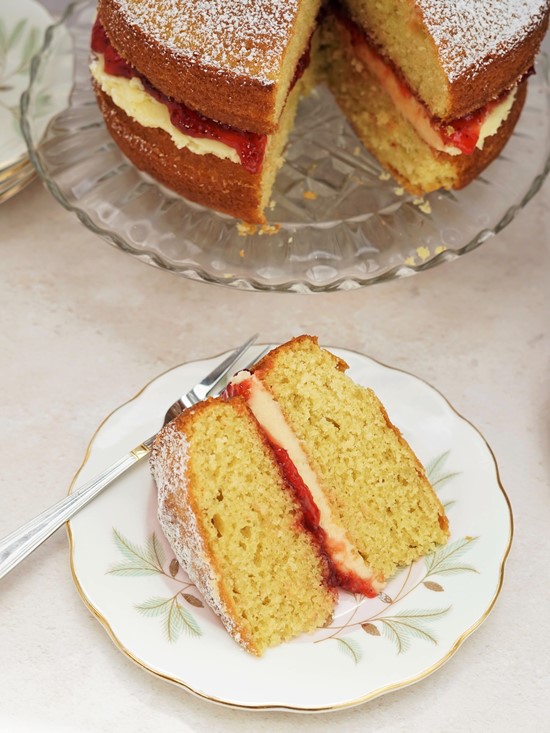
I prefer to call mine Victoria Sponge Cake instead of Victoria sandwich though. Most of the recipes I see for ‘sandwich’ are filled with jam only. No cream or buttercream. And, to paraphrase Philip Larkin, I would rather venture forth in a field of snakes without boots than have a jam-only Victoria sponge.
For me, the filling must contain buttercream rather than whipped cream. I think its firmer texture goes much better in this simple but moreish cake. Buttercream doesn’t seep into the sponge either, so you can fill the cake well in advance. This is also great for small households like mine where we eat it over several days. Another bonus, as a picnic fan, is that the buttercream version is more robust when transported.
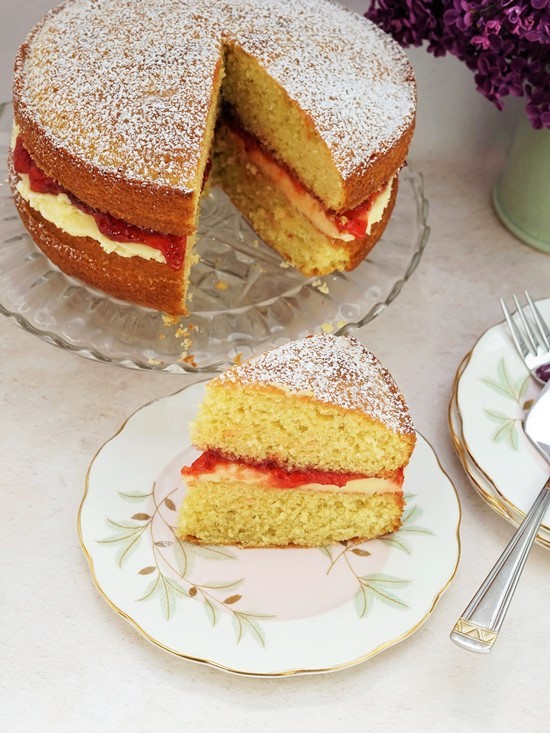
With ingredients I always have in the cupboard and fridge, Victoria Sponge is a great stand-by when you have the urge for cake. But, so good, it’s perfect for a special occasion or to serve to guests.
EASY VICTORIA SPONGE
You’ll find full instructions and ingredient amounts in the detailed recipe card at the end. What follows is an overview plus a few images that should help beginner cake makers.
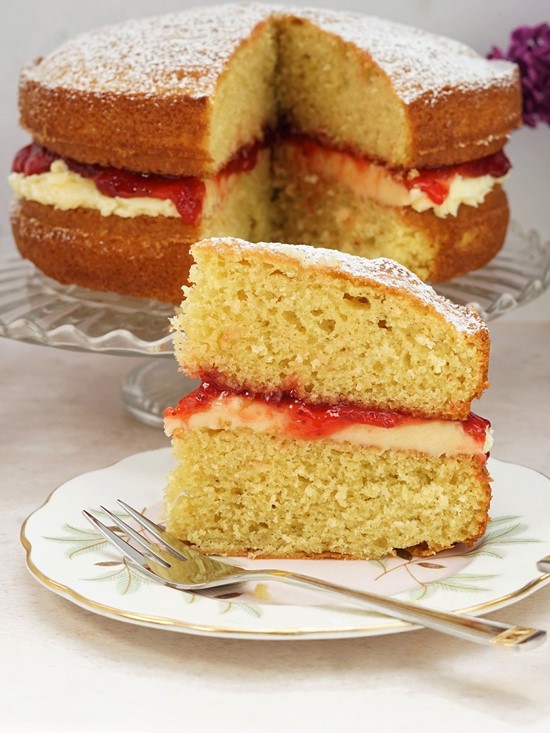
INGREDIENTS
For the cake batter you need only a handful of everyday ingredients.
- Self-Raising Flour
- Baking Powder for extra lightness
- Salt just a pinch
- Caster Sugar I use golden caster sugar but ordinary white is fine too.
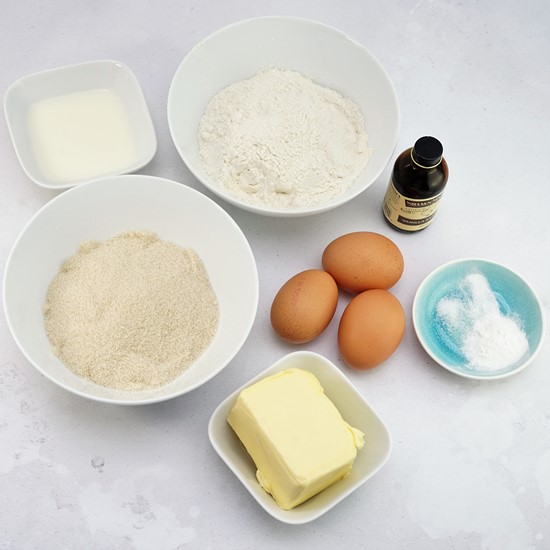
- Butter salted or unsalted, whichever you have.
- Eggs you’ll need 3 for 18cm cake tins, 4 for 20cm cake tins.
- Milk a splash to lighten the mixture.
- Vanilla Extract optional.
METHOD
You start by sifting together the flour, baking powder, and salt. Set this aside while you beat together the butter and sugar, plus the vanilla if using. If you have electric beaters then this will be much quicker. You could do it by hand, but life is made considerably easier with even no-frills beaters.
Beat until light and fluffy. Your butter will need to be very soft to do this, so take it out of the fridge well in advance. I’ve been known to soften it very gently in the microwave when short of time.
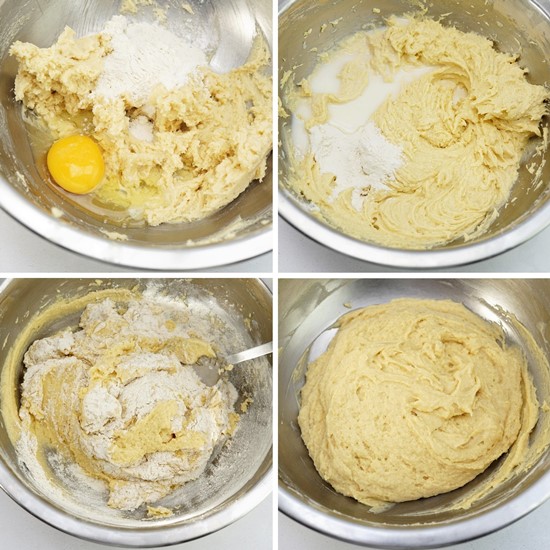
Next, you beat in the eggs, one at a time. I add a little of the measured flour with each egg to help prevent the batter splitting. Ditto with the splash of milk: add a scant tablespoon of the flour when you beat it in.
Finally, the rest of the flour mixture is folded (not beaten) in and the batter transferred to cake tins.
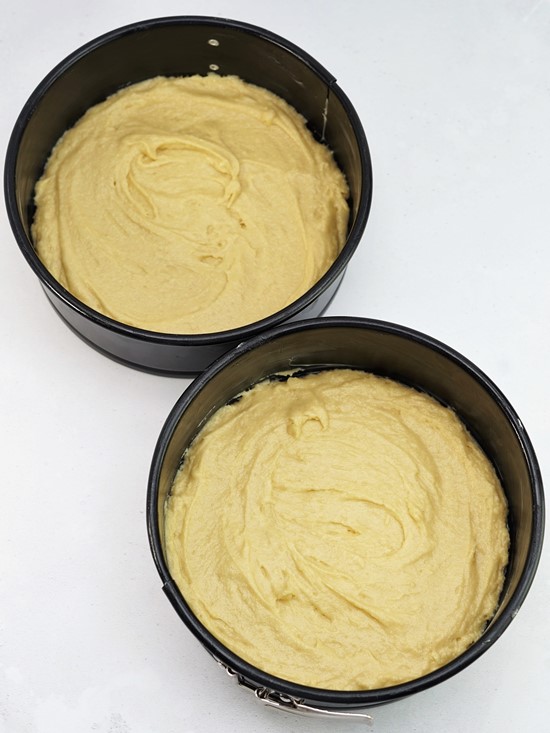
The amounts shown in the detailed recipe are for deep, round cake tins that are 18 centimetres in diameter. However, in the recipe notes at the end I also give amounts for 20 cm tins. I have non-stick springform ones, but loose-bottomed tins are fine too. To be one hundred per cent sure the cakes will turn out easily, I grease the tins with butter first.
BAKING & FILLING VICTORIA SPONGE CAKE
The cakes are going to take around 20 minutes to get risen and golden brown. They should be slightly pulling away from the sides of the tins and the tops should be set and springy if you gently press them. Because ovens vary, I suggest you check after 15 minutes and turn the temperature down a smidgen if you think they’re browning too quickly.
Don’t try to remove the cakes from the tins straight away. Leave for 5 – 10 minutes then take out and transfer to a wire rack until completely cold.

While that’s happening, you can be getting on with making the vanilla buttercream. All you need is more soft butter, sifted icing sugar, and vanilla extract.
Start by beating the butter until soft. I use a small plastic spatula. Then gradually beat in about half the icing sugar, followed by the vanilla. Then beat in the remaining icing sugar. I like a firmish buttercream, but if you want it softer then add a drop or two of milk.
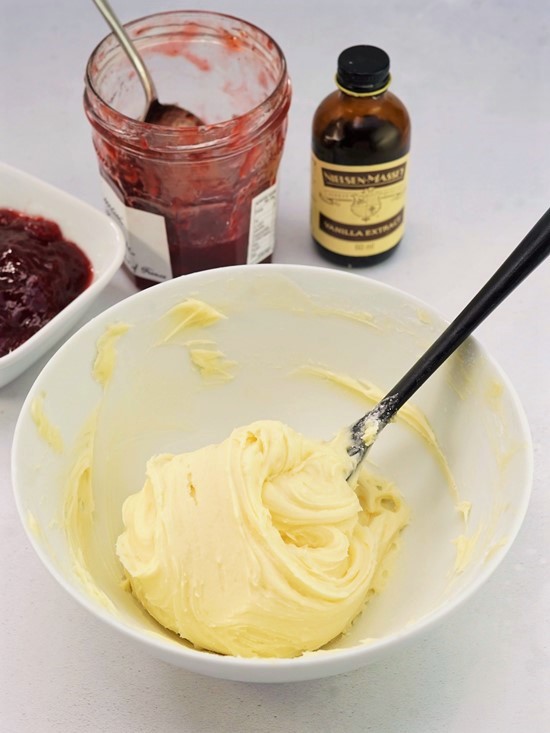
When the cakes are completely cold, turn one over and spread it with the buttercream, going right up to the edges. Next spread a generous amount of jam (3 – 4 heaped tablespoons) over the buttercream, leaving a little bare edge. Raspberry jam is traditional, although I prefer Homemade Strawberry Jam.
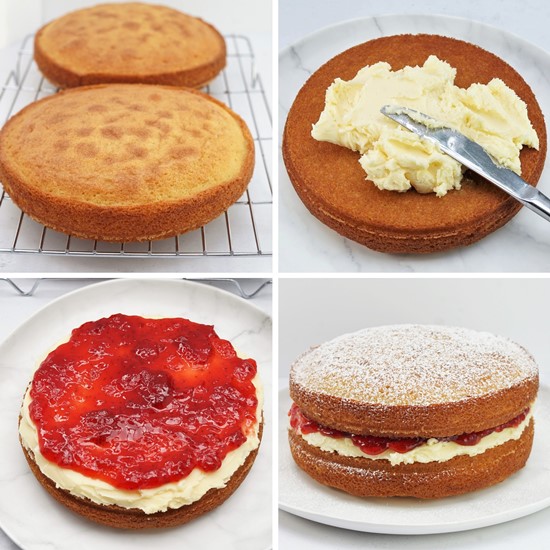
Finally, take the second cake and place it, right side up, on top of the filling. Gently press down so the jam starts peeping appetizingly out, then dust over some icing sugar.
And that’s it. Your easy, delicious Victoria Sponge Cake is ready to slice and serve.
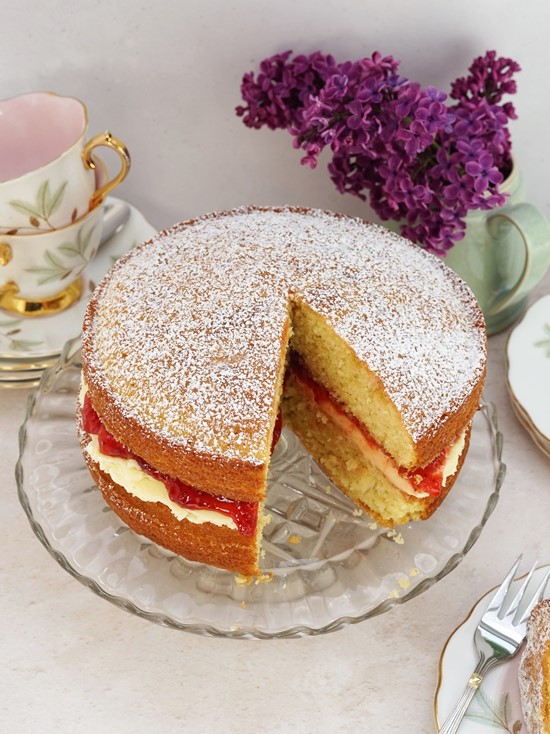
NO WONDER IT’S A CLASSIC
I don’t know how many Victoria sponge cakes I’ve made over the years. But I’m always surprised at just how good this simple treat is. The buttery cakes are substantial without being heavy. The filling, fruity and creamy, is a delight.

Stored in an airtight container, I find the cake is just as good a couple of days after baking.
Perfect as a snack with a cuppa, as part of a more elaborate and traditional afternoon tea, as a dessert, or on picnics, no wonder Victoria Sponge always comes near the top in surveys of Britain’s favourite cakes.

I’D LOVE TO HEAR WHAT YOU THOUGHT IF YOU’VE MADE THIS CAKE. LEAVE A COMMENT & RATE THE RECIPE BELOW
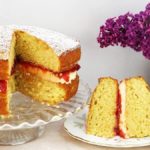
Victoria Sponge Cake with Jam & Vanilla Buttercream
An easy British classic that's perfect for afternoon tea, parties and picnics. Buttery sponge cakes sandwiched with fruity jam and buttercream with a hint of vanilla.
Ingredients
- 175 g self-raising flour
- 1 level tsp baking powder
- 1 pinch salt
- 175 g soft butter plus extra for greasing
- 175 g caster sugar
- 1 tsp vanilla extract optional
- 3 eggs
- 1 tbsp milk
- 3 - 4 tbsp strawberry or raspberry jam
Vanilla Buttercream
- 100 g soft butter
- 1 tsp vanilla extract
- 150 g icing sugar, sifted plus extra for dusting
Instructions
-
Preheat the oven to 180C / 160C Fan / Gas 4.
Butter 2 deep sandwiches tins that are 18 cm in diameter.
See Recipe Notes for adapting the recipe for 20 cm tins.
-
Sift together the flour, baking powder, and salt then set aside.
-
In a large bowl and preferably using electric beaters, beat together the butter, sugar, plus vanilla extract if using, until soft and light. Scrape down the sides of the bowl as necessary during this and subsequent steps.
Beat in the eggs one at a time along with approximately 1 tbsp of the sifted flour each time.
Beat in the tablespoon of the milk along with another scant tablespoon of flour.
Gently fold in the rest of the flour.
-
Divide the mixture between the two prepared tins, ideally weighing for accuracy, and smooth the tops.
Put in the oven and bake until risen and golden brown: when done the edges should be pulling away from the sides of the tin and the tops springy when lightly pressed (approximately 20 min).
Tip: check after 15 minutes and if the cakes are browning very quickly, turn the temperature down a little.
-
When done, transfer the tins to a wire rack and leave to cool for 5 minutes.
Carefully remove the cakes from the tins and put on the rack until completely cold.
-
While the cakes are cooling: make the vanilla buttercream.
Beat the butter with a plastic spatula until very soft.
Gradually beat in half the sifted icing sugar, followed by the vanilla extract, then the rest of the icing sugar. Set aside until the cakes are cold.
-
Turn one of the cakes over so the underside is now uppermost and spread with the vanilla buttercream, making sure it goes right to the edges.
Spread the jam generously over the buttercream, leaving a little bare edge.
Place the second cake on top, right side up, and very gently press down just so the jam starts to peep out.
Put a little icing sugar in a sieve and dust over the top of the cake.
-
Store in an airtight container. Best eaten within 3 days.
Recipe Notes
The recipe gives ingredient amounts for two deep, 18cm diameter round sandwich tins. If your tins are 20cm: increase the flour, butter and sugar to 200 grams each, increase the baking powder to 1.5 tsp baking powder use 4 eggs instead of 3. You may need to add a little extra milk and increase the baking time.
RELATED RECIPES

